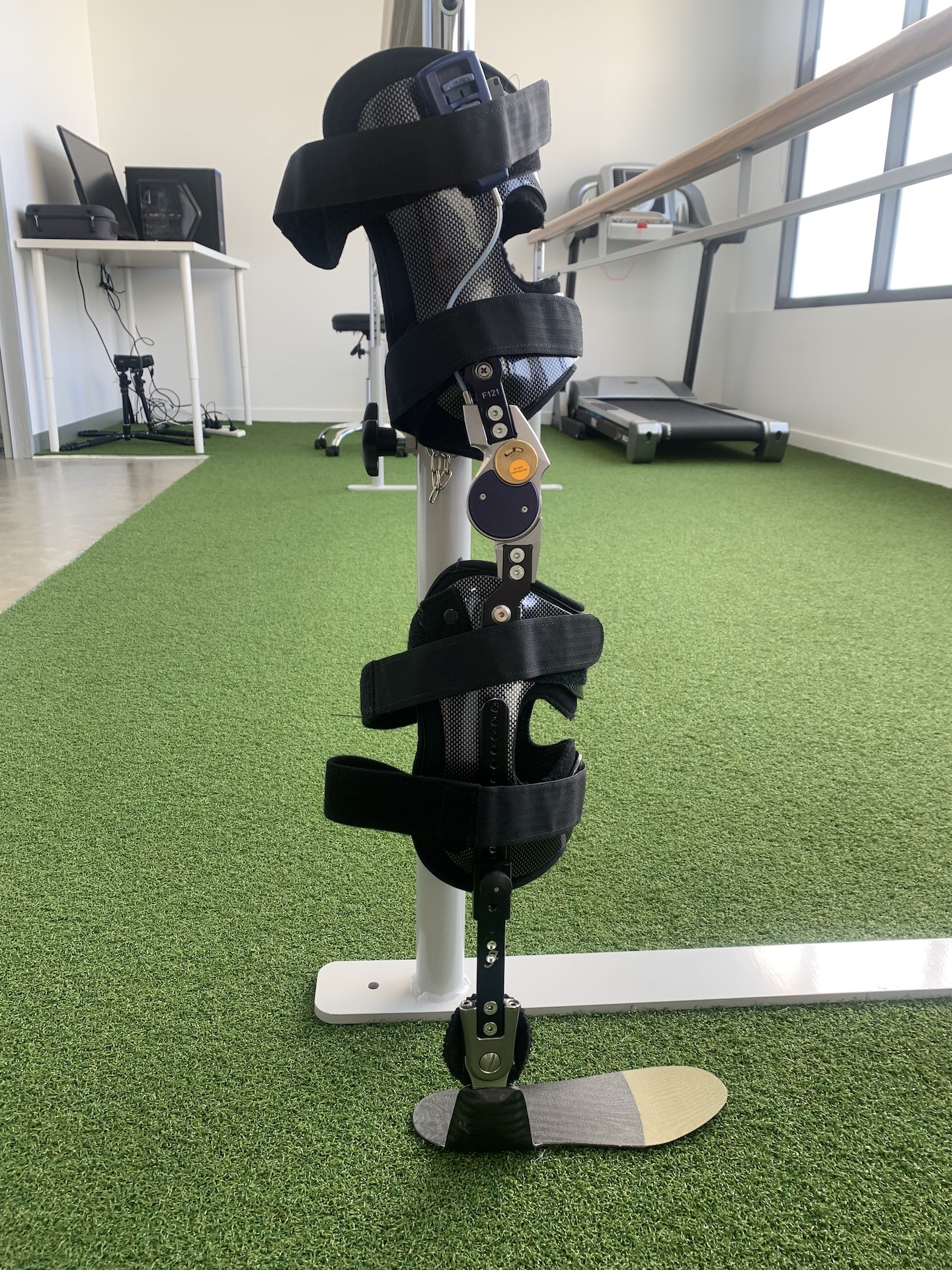Stance Controlled KAFOs Explained
A Stance Controlled Knee Ankle Foot Orthoses (or SC KAFO for short) is designed for those with quadriceps weakness (or weakness above the knee).
Upon heel contact, it allows for the knee joint to lock to ensure stability. As the user’s toe lifts off the ground, it unlocks and moves through the swing phase – this is the primary characteristic of the SC KAFO.
The SC KAFO facilitates patients with quadriceps weakness to develop a safer and more natural gait.

How Do Stance Controlled KAFOs Work?
Different knee support mechanisms can be incorporated into a KAFO design, and there are a number of different stance-controlled KAFO brands we would consider depending on the patient’s body weight, their preferences, and the functional purpose of the unit.
SC KAFOs can be electronic or mechanical. Both types serve to lock the knee during stance (when users benefit from added bracing/stability) and unlock during swing (when you want to be able to clear the leg for more natural walking).
SC KAFOs often have three settings: automatic locking, permanent locking and permanent unlocking, giving the user control over the functions.
The KAFO is fitted with two shells: one surrounding the ankle, the other surrounding the knee. These pieces are linked together by strong metal bands.
The result is that a person can walk more naturally, balance better and achieve a better distribution of load through their joints.

Differences Between Electronic and Mechanical Stance Controlled KAfos
Electronic SC KAFOs have a sensor that senses when the heel is on the ground. The joint then locks electronically by means of a small piston that drops into the lock.
There are also mechanical KAFOs that work on a pendulum mechanism. These lock and unlock depending on the angle of the knee in the sagittal plane.
During walking, the device locks towards the end of the swing phase, just prior to the heel strike, and unlocks when the heel lifts off.
Which is ‘better’?
The decision of which type of SC KAFO to select often comes down to cost.
During an appointment at our clinic, we will recommend that patients try both versions to see what feels the best, and what their preferences are. Electronic ones are usually more expensive.
Our team at Orthotics Plus will always work with our patients to find the best solution considering both cost and efficacy given their condition.
Can SC KAFO devices and services be funded by the NDIS?
Yes. Once we’ve established the patient’s status, goals, and appropriate equipment prescription, we can then go through the process of applying for funding through the NDIS.
Because these KAFOs are reasonably high-cost, the process may take time as they’re unlikely to already be automatically included in their plan at that point. The NDIS may require an AT assessment or plan review in order to fund the SC KAFO and associated services.

What Conditions Require a SC KAFO?
There are a number of physical and neurological conditions that could affect the quadricep’s strength and the capacity to lock the leg, these include, but are not limited to:
- Post-stroke patients
- Cerebral palsy
- Muscular dystrophy
- Parkinson’s disease
- Polio
- Acquired or traumatic brain injuries
While paediatric patients can also exhibit quadriceps weakness, it is very rare that a SC KAFO would be necessary. Such knee Orthotics are almost always worn by adults.

Book an Appointment with Orthotics Plus
The process starts with a one-hour assessment at our clinic where we perform strength and range-of-motion testing and speak with the patient about their goals. We’ll also examine their gait and discuss factors specific to their condition.
In the event a KAFO is indicated, we will look at a trial and book the necessary follow-ups.
We will test different KAFOs and see how they work to enhance the patient’s stance control through standing, walking, sitting and so on. That will determine the most appropriate KAFO design for them.

Stance Controlled KAFO FAQ
Each user will operate with a different level of activity according to what’s most comfortable for them. The SC KAFO can be worn during activities and recreation.
The KAFO allows people to participate in daily life, such as visiting the shops, attending work, university or living at home with greater safety.
The SC KAFO can be easily and comfortably worn under loose-fitting pants, such as track pants, or skirts and shorts. If worn with tight-fitting leggings or a fabric with enough stretch, it’s best to wear them underneath the KAFO.
SC KAFOs are worn only on the affected limb or limbs. Many patients present with issues affecting both legs, in which case a SC KAFO would be an appropriate prescription.
They can be, but, oftentimes, the orthotic is combined within the footplate of the KAFO. This allows for a safe and comfortable fit while wearing the device.
Orthotics Plus stocks multiple brands of SC KAFOs, as well as customised options, each option has their own unique materials.
The shell of the KAFO itself can be made from different types of materials, namely carbon fiber or prefabricated plastic. The strut brace component is usually made from titanium or steel.